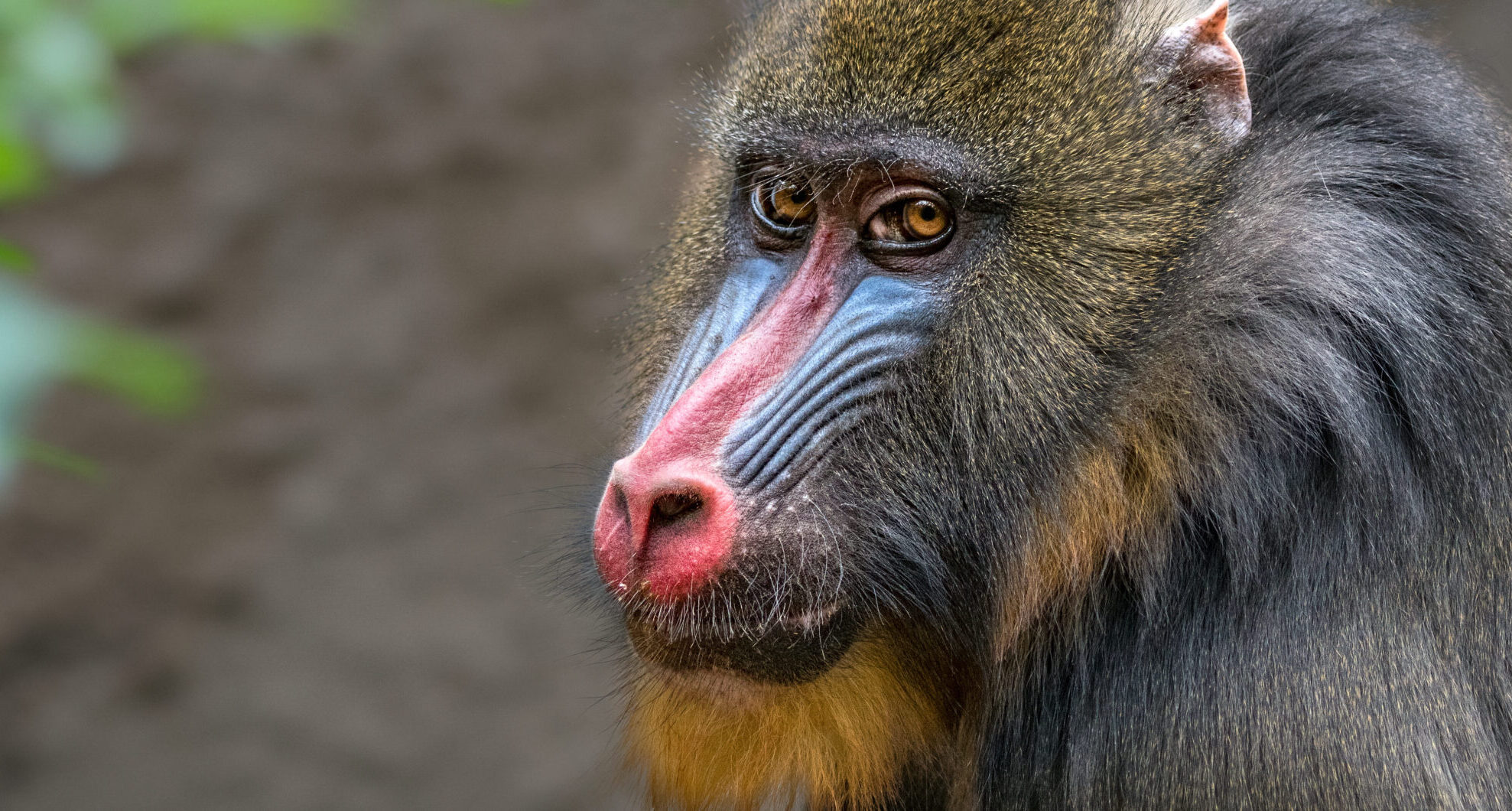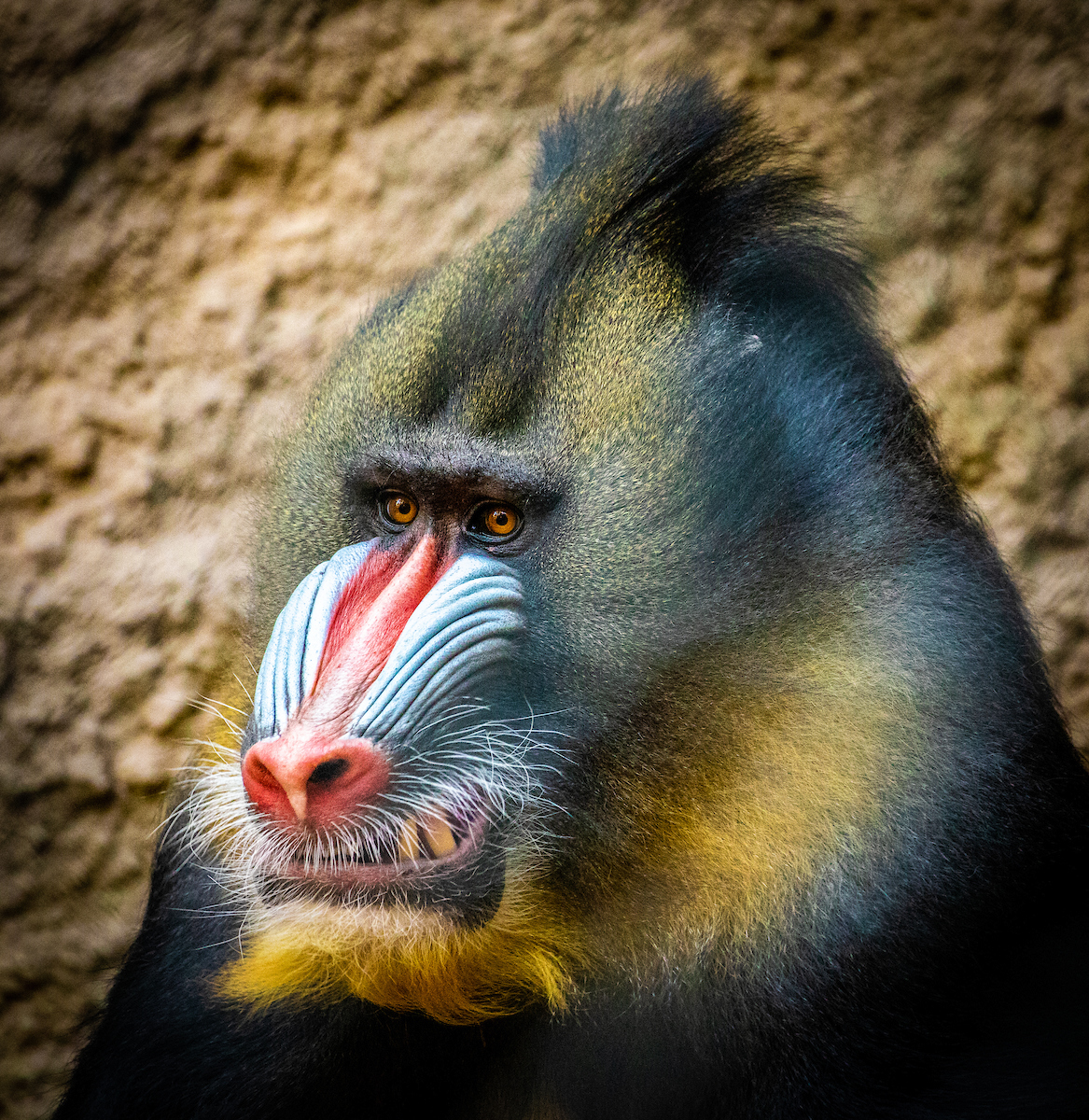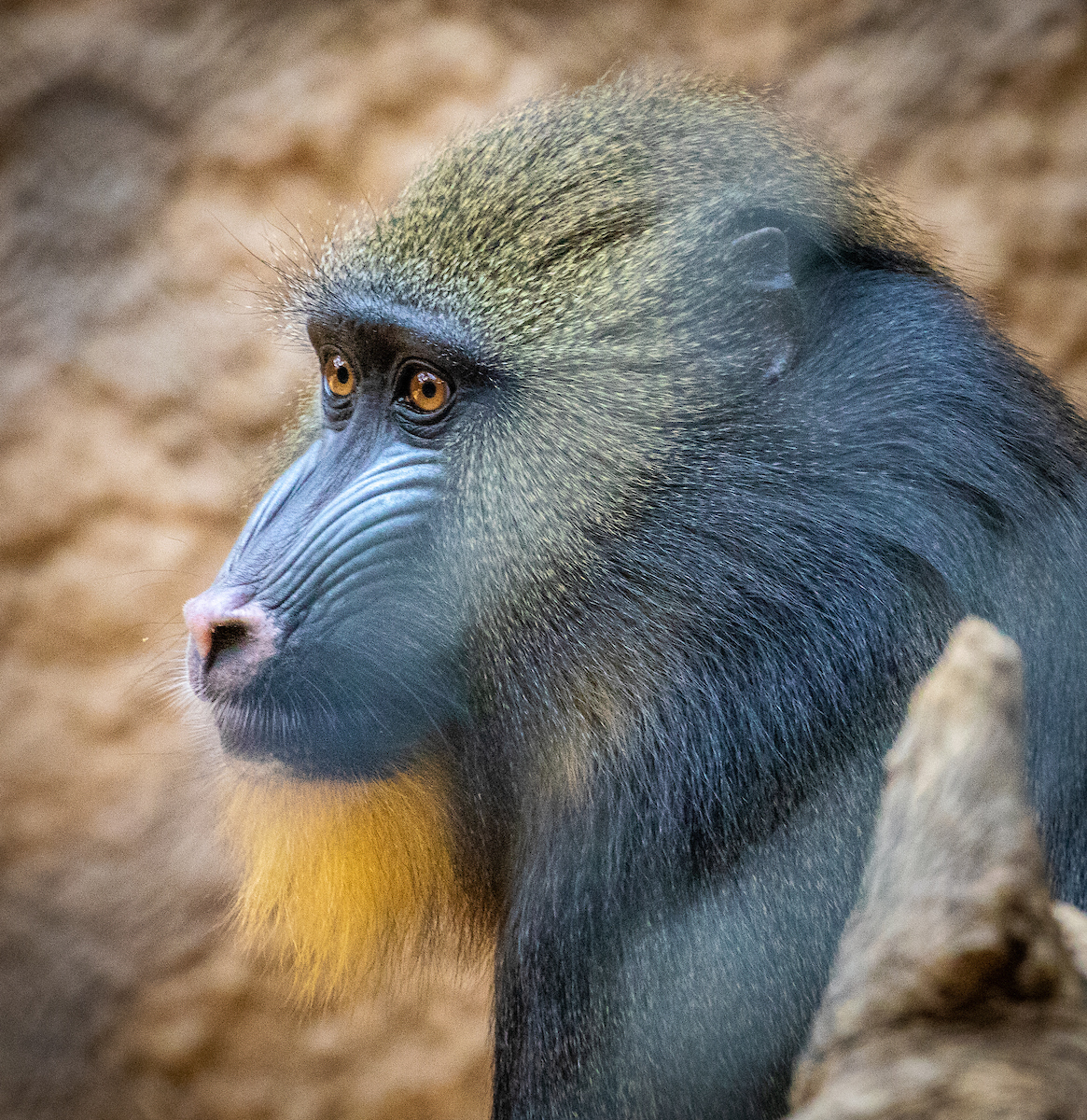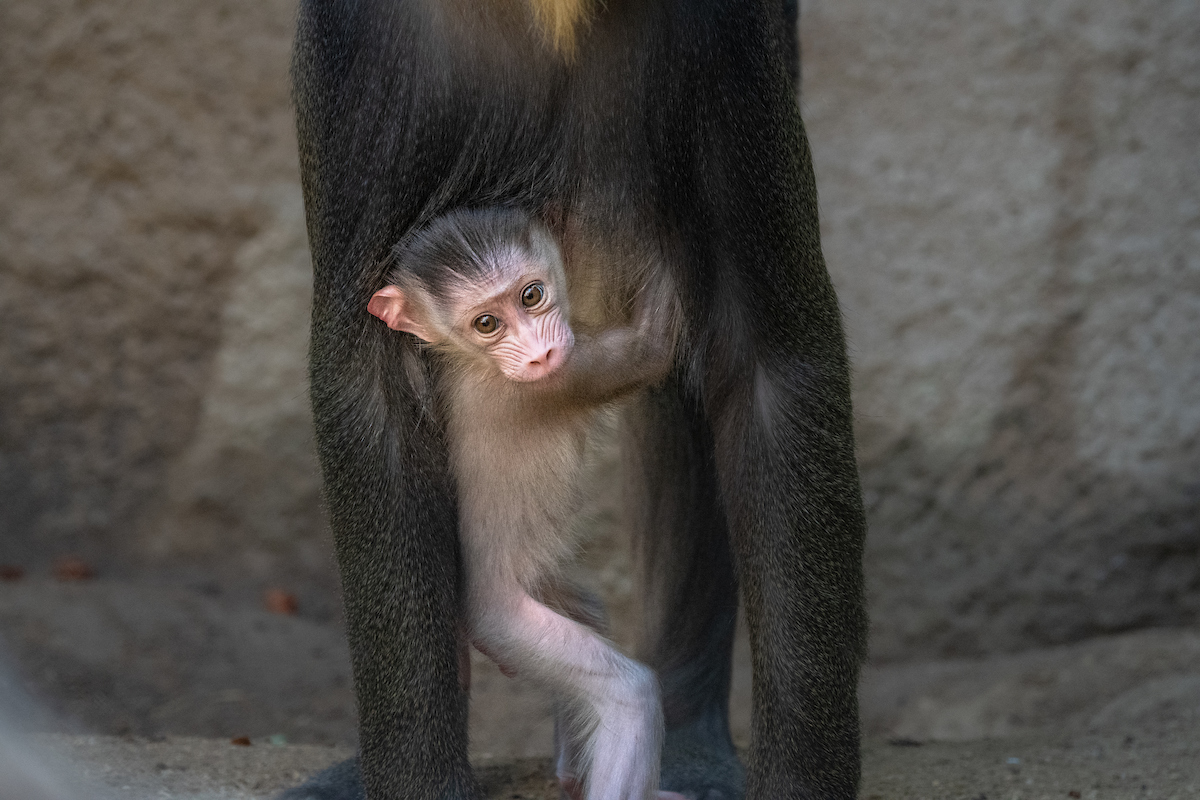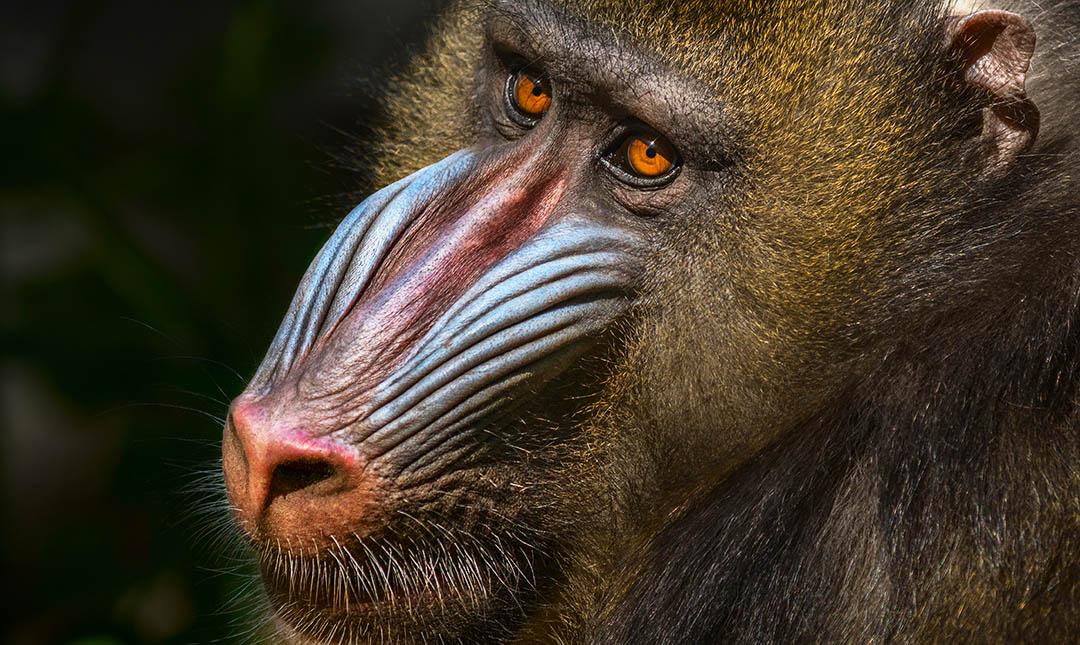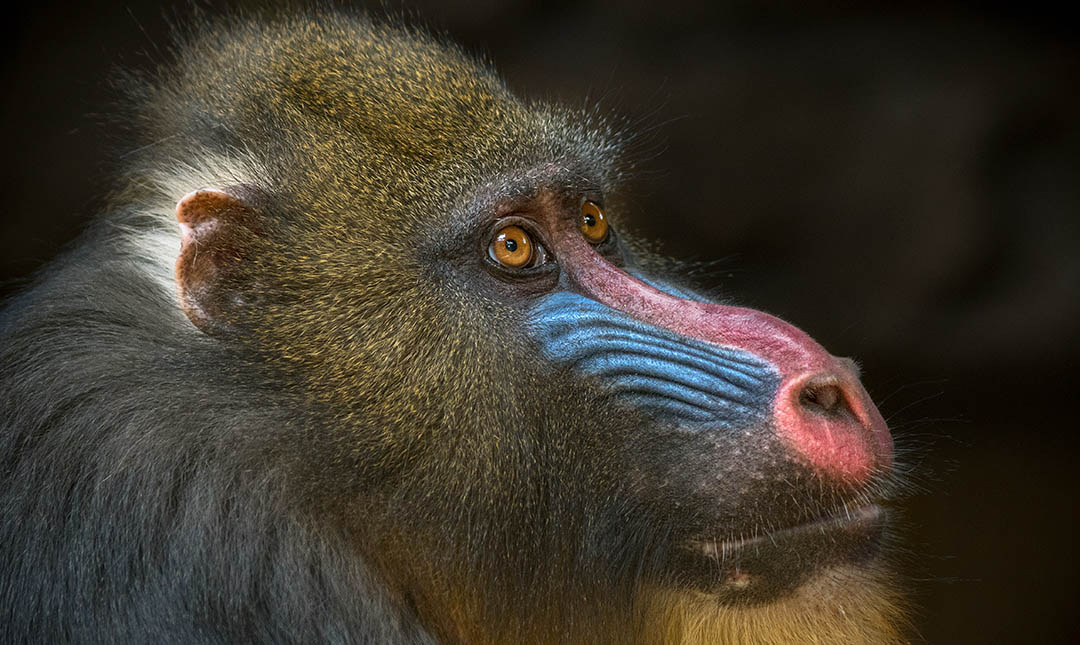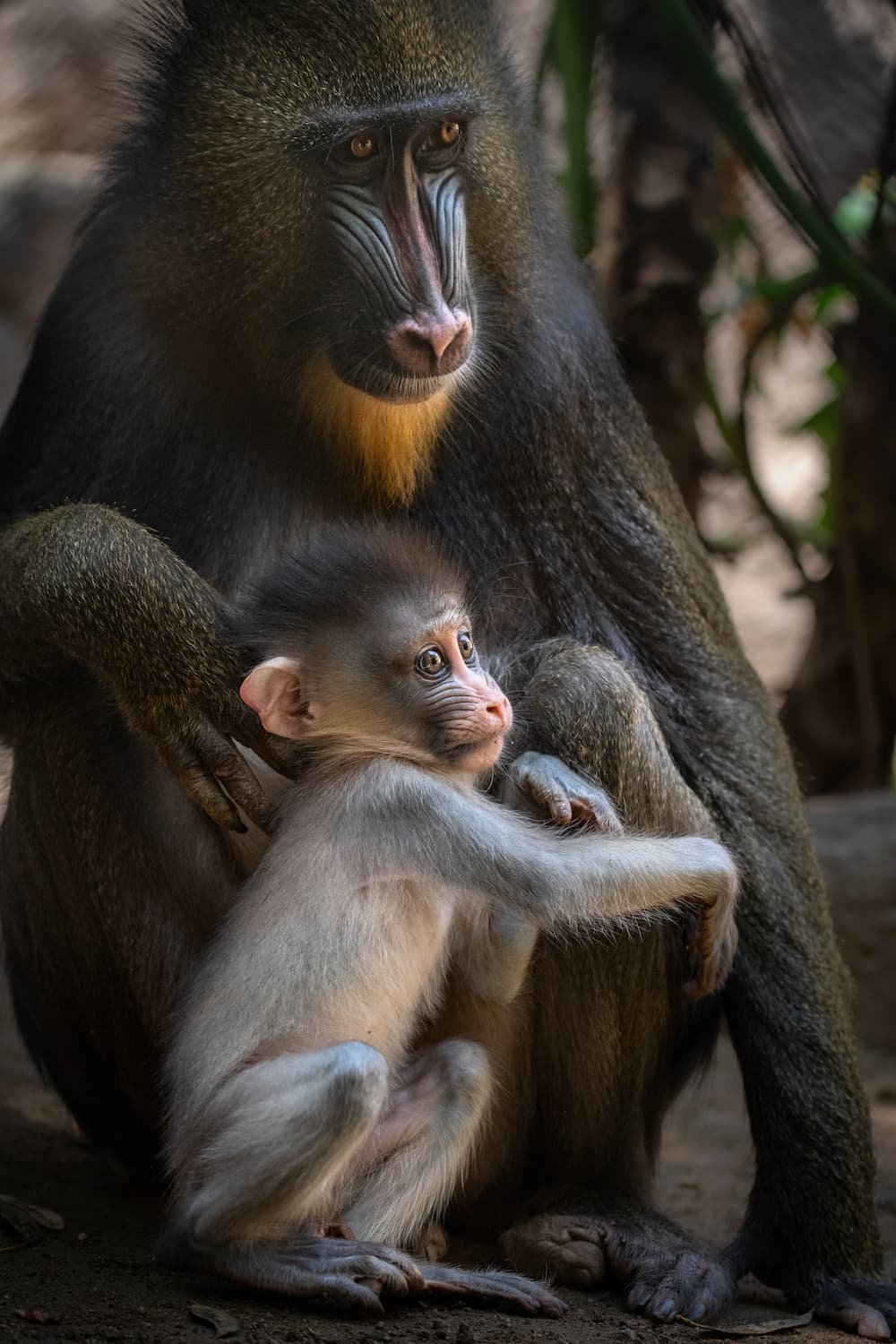About
Mandrills are the largest monkey species and one of the most colorful. They resemble baboons, but DNA studies show they are more closely related to mangabey monkeys. Although the character Rafiki from The Lion King is often referred to as a baboon, the colors on his face indicate that he is actually a mandrill.
Males have red and blue muzzles and similarly colored rear ends. The reds and blues can blend to form gorgeous hues of purple. Dominant males are the most colorful due to high levels of testosterone, and their colors will fade if their status decreases. Females are half the size of the males with paler faces. The alpha male does most of the breeding. After a six-month gestation, a single infant is born, typically during the rainy season when food is plentiful. The young are weaned at six to 12 months but stay with the mother until the next infant is born. Mandrills are cheek-pouch monkeys, which allows them to fill their mouths with a stomach’s worth of food to eat later. Their intimidating canine teeth (up to 2.5 inches long) can be used in defense. Mandrills expose their teeth as a greeting rather than a threat. Mandrills travel in multi-male and multi-female groups called troops, which range from 20 animals too, on occasion, more than 200. The troop is led by a single dominant male. They use scent glands on their chests to mark their territory and are both terrestrial, spending time on the ground, and arboreal, spending time in the trees where they sleep every night. Predators include leopards, eagles, pythons, chimpanzees, and humans.
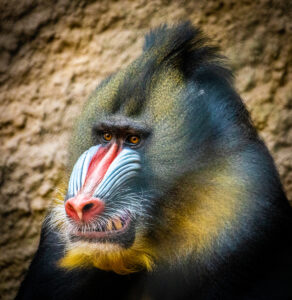
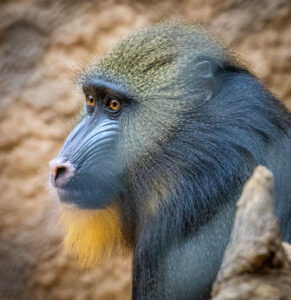
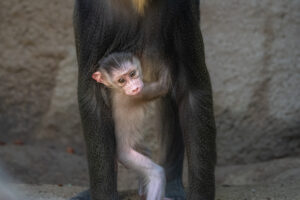
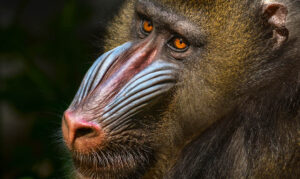
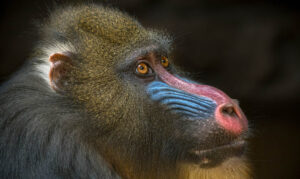
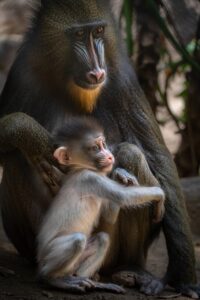
Habitat
Mandrills live in the remaining primary and secondary rainforests of western Africa in Cameroon, Gabon, and southwestern Congo.
Diet
Mandrills are omnivores, eating primarily fruits, seeds, fungi, and roots, supplemented with insects, reptiles, and other small animals. If food is scarce, they may raid crops and plantations.
Physical Characteristics
Body length is two to three feet. Males weigh up to 80 pounds, and females weigh up to 30 pounds. Lifespan is 20 to 40 years.
LOCATION WITHIN THE ZOO
You’ll find this animal in the Africa section. See Zoo Map.

